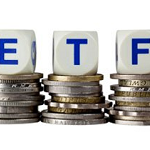3 Smart-Beta ETFs That Actually Deliver The Goods
 Most smart-beta ETFs are falling flat on their promises
Most smart-beta ETFs are falling flat on their promises
Wall Street loves a good marketing gimmick. After all, it’s what drives investors into their new exchange-traded funds and products (And keeps paying for their kid’s tennis lessons and their sports cars). Right now, the key marketing term happens to be “smart-beta ETFs.” These ETFs use alternative index construction rules (smart beta) rather than the more traditional market-cap weighted method of say, the SPDR S&P 500 ETF Trust (NYSEARCA:SPY).
These alternative indexes can be anything from screening based on fundamental factors, equal-weighting constituents and focusing on one attribute such as dividends. As long as the ETFs use something other than market-cap weighting, the smart-beta tag can be used. The end result of all of this is that smart-beta ETFs are designed to outperform more traditional index ETFs and funds.
The problem is most smart-beta ETFs fall a tad bit short on the returns front. A lot of them really are just hype and gimmick.
On the other hand, some smart-beta ETFs that have proven themselves to be great compliments to any portfolio. Luckily, here at InvestorPlace, we’ve done some of the legwork for you.
Here are three smart-beta ETFs that really do deliver for investors.
Smart-Beta ETFs to Buy: iShares Edge MSCI USA Quality Factor ETF (QUAL)
Expense Ratio: 0.15%, or $15 per $10,000 invested
There’s a large body of academic research that shows high-quality earnings and low debt levels in stocks can consistently deliver better risk-adjusted returns than the broader market over the long haul. The iShares Edge MSCI USA Quality Factor ETF (NYSEARCA:QUAL) hopes to exploit this fact.
QUAL’s underlying index — the MSCI USA Sector Neutral Quality Index- will screen U.S. large- and mid-cap stocks for three main “quality” factors. These include high return on equity, stable year-over-year earnings growth and low financial leverage/debt levels. This smart-beta ETF basically separates the wheat from the chaff and narrows the broader MSCI USA Index down to just 125 holdings.
These holdings have a very different makeup than the more comprehensive index. For one thing, tech makes up a much larger percentage. But remember, the fund screened for quality. As a result, QUAL delivers more oomph while removing some of the volatility and downside risks.
And the ETF has done a pretty good job of doing just that. Since its inception, the fund has managed to produce average annual returns of over 11% per year. And it has managed to outperform the S&P 500 over that period.
Add in QUAL’s rock-bottom expense ratio of just 0.15% and you have one of the best smart-beta ETFs to own for the longer haul.
Smart-Beta ETFs to Buy: Guggenheim S&P 500 Equal Weight ETF (RSP)
Expense Ratio: 0.40%
One of the biggest issues with traditional market-cap weighted indexes is that they are … big. The largest firms in the index receive a higher percentage of the index than smaller ones. That means Exxon Mobil Corporation (NYSE:XOM) and Apple Inc. (NASDAQ:AAPL) can swing the S&P 500 depending on how they are doing. The stocks at the bottom of the totem pole can not.
The issue is XOM, and even AAPL are somewhat slow growing, at least when compared to the smallest firms in the index. And they more expensive when looking at price-to-earnings ratios and other metrics.
Equally weighting an index puts XOM on the same footing as the bottom stocks in the S&P 500. Everyone has an equal opportunity to drive the gains in the index. The smaller and faster growing firms have the ability to shine finally.
As the name implies, the Guggenheim S&P 500 Equal Weight (NYSEARCA:RSP) simply owns all the stocks in the benchmark index in equal proportions. And while that may seem like a simple strategy, it has allowed the smart-beta ETF to beat the pants off of the regular S&P 500 over its history. Over the last ten years, RSP has produced a 7.84% annual return. The regular S&P 500 only managed a 6.95% return. That extra percentage point is enough of an extra boost to create some serious long-term compounding.
When it comes to smart-beta ETFs, simple strategies are better. Expenses for RSP run at 0.40%.
Smart-Beta ETFs to Buy: PowerShares FTSE RAFI Developed Markets (PXF)
Expense Ratio: 0.46%
When it comes to international stock holdings, smart-beta ETFs do shine. Case in point, the PowerShares FTSE RAFI Developed Markets ex-U.S. Portfolio (NYSEARCA:PXF).
PXF was developed by the gurus at Research Affiliates. RA created the concept of smart-beta decades ago, and their RAFI line of indices is the standard-bearer with regards to factor-based investing. PXF screens the developed international world for stocks that exhibit the exact combination of four fundamental factors, including book value, cash flows, sales/revenues and dividends. Stocks are weighted based on their underlying strength scores.
As a result of the screening process, the smart-beta ETF tilts heavily towards value stocks. And over the long term, value stocks — particularly dividend-paying value stocks — have ruled the roost when it comes to returns.
And PXF is no different.
Of course, international investing hasn’t exactly been all that great over the last few years: PXF has only managed to return a measly 0.27% annual return since its inception just before the credit crisis. However, the standard benchmark for international stocks — the iShares MSCI EAFE Index Fund (ETF) (NYSEARCA:EFA) — netted a loss over the same time. Meaning, if you are going to add international stocks to a portfolio, PXF has to be your go to fund.
Note: This article originally appeared at investorplace.com. For more information about ETFs, click here…
The author of this article is Aaron Levitt. As of this writing, Aaron was long RSP.
Category: ETFs




